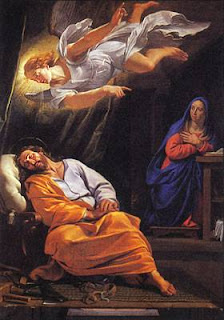Jesus is growing up. The end of Luke chapter 2 gives us the one account of Jesus' life between being a toddler (Matthew 2) and the advent of his ministry as an adult, probably around 30 years old. Jesus travels with his family on their yearly pilgrimage to Jerusalem for the Festival of the Passover, the celebration of the Exodus journey of salvation, where God delivers God's people from slavery to freedom. This would have been an enormous undertaking for humble people from Galilee, taking off work for more than a week to travel many miles. Yet they did it each year; the practice was at the heart of their faith and self-understanding. At age 12, Jesus was at the cusp of adulthood in their culture. This would be a time for his learning to take on his own religious responsibilities; to become an adult in the faith. Not unlike Confirmation. It would have been Joseph's responsibility to see that Jesus learned particular things on this trip.
When the family returns to Jerusalem at the end of the festival, Jesus remains behind in Jerusalem. A full day of travel takes place before Mary and Joseph realize that Jesus is not among the extended family and community members headed back to Nazareth. They anxiously return to the capitol, searching for three days before they find him in the Temple! He is sitting among the teachers, listening and asking them questions. Jesus is learning, and people are amazed at the understanding and perspectives he demonstrates.
His mother is both relieved and furious. He asks her why they had been "searching for him" for three days; Didn't they know that he needed to be immersed in the "things of my Father?" Mary and Joseph do not understand what he is telling them (which is not unusual when young men and women talk to their parents!). Mary winds up "treasuring these words in her heart," even though she was so upset. Jesus is maturing, and already moving deeper and further into his faith life than his parents have taught him!
Throughout history, artists who have painted the scene have had Jesus "teaching the teachers." They have also portrayed him disputing with the teachers,as though he is correcting them. But Luke has Jesus much more like the young people of our own church. Jesus listens and asks important questions; from his learning and wisdom he brings forth perspectives and perhaps alternative direction! He grows right before everyone's eyes, and I have no doubt that he offers perspectives that wind up teaching the teachers and anyone who is listening. Such is a healthy learning environment!
Here is a sample of artwork:
I like Polenov's "Among the Teachers," the second from the bottom, which has the youthful Jesus sitting among the teachers, listening. In those days, teachers sat and students stood, so young Jesus is counted among the teachers, but it is his attention and thoughtfulness that is communicated strongly. Iam also struck by the two portrayals that have Mary confronting Jesus, and appearing to pull him away. Do they communicate the struggle effectively?






























